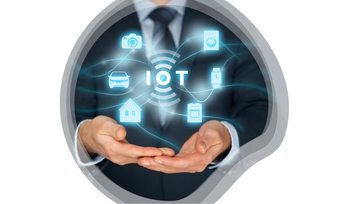
IoT – what is it? The term “IoT” was first used in ’99 and has only entered our lexicon in the last 10 years. But what does it really mean? IoT as an acronym stands for the “Internet of Things,” which could be summarized as anything that collects data and shares it over a wireless connection onto a network for processing.
What is IoT?
IoT is more than just a device connected to the internet; it includes the whole data supply chain, from the device collecting data, to the wireless network used to transfer it, to the back-end infrastructure that will analyze/process it, to the data itself and the app that you use to control or view the data from the device.
IoT Today
Although we may not even realize it, IoT has become more and more prevalent in our daily lives for many years now.
In recent history, the Smartwatch has become commonplace and, from a consumer’s point of view, it’s an extension of their phones. Peeling back the technology, the smartwatch is an IoT device; it collects data about the wearer such as Heart Rate, GPS location, Number of Steps, etc. and all that data gets sent to the phone and eventually the cloud, where the user can access data about their health over the course of a day. Involved in that simple watch are a local wireless connection from the watch to the phone, then a larger wireless connection from the phone to the internet, and a cloud provider where the data ultimately resides and is viewed.
Another example is what is commonly referred to as “smart home,” which includes home automation devices, from door sensors and carbon-dioxide detectors that can send us notifications when triggered, to light bulbs, TVs, or AC systems we can control from an app on our phone or hands-free using a virtual assistant.
IoT devices don’t just make our lives easier as consumers, the industry has taken up IoT to alleviate the resource workload. Many utility companies have deployed smart meters that report monthly utility consumption, which cuts costs on having to deploy a team to read the meter at every house.
Those examples are only the tip of the iceberg as there are thousands of use cases that we improved with IoT. IoT can be used to automate repetitive tasks (e.g., opening and closing a window in a greenhouse), provide insight on an environment (e.g., temperature and humidity of a building) and the status of remote location (e.g., number of parking spots available in a parking lot), and can also serve as a trigger button (e.g., panic button for your lone worker), access control (security NFC reader), and many more.
Connectivity
At the heart of the IoT ecosystem is the connectivity of devices – those devices being able to connect to the internet and have a path to deliver its payload. There are three general network architectures used to connect IoT devices: point-to-point, mesh network, or star network, depending on the technology used to connect them. There are dozens of protocols available to connect IoT devices. However, only a handful of them have reached critical mass that allows them more widespread acceptance (e.g., Bluetooth, NFC/RFID, etc.).
In our forthcoming “Demystifying Technology” blog posts, we will discuss different IoT use cases and scenarios to help us better understand how we can deploy a robust and secure IoT ecosystem ensuring access to data when needed.
Contact
(C) Rémi Frédéric Keusseyan, Global Head of Training, ISEC7 Group












